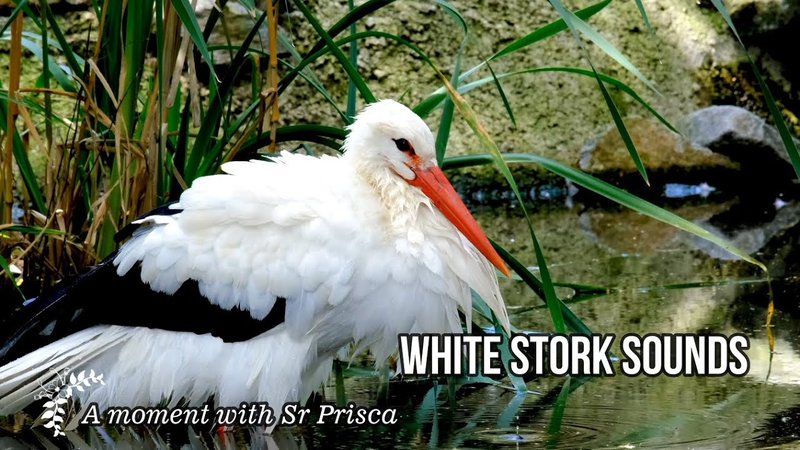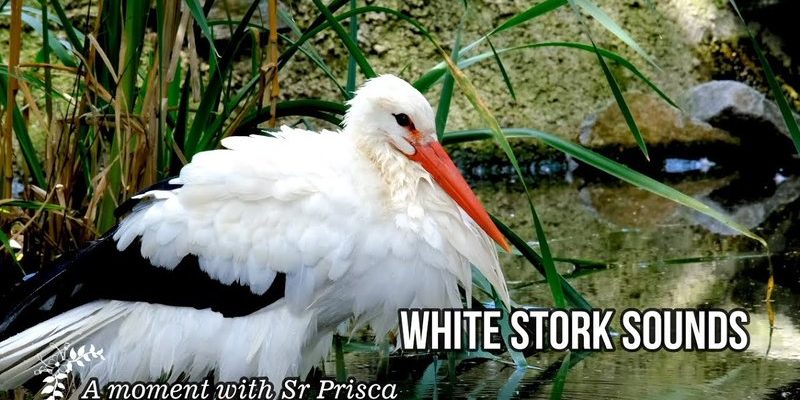
Now, you might be wondering why it’s important to decode these vocalizations. Understanding what storks are saying can deepen our appreciation for these majestic birds. So, let’s dive into the world of stork vocalizations and explore the meaning behind their sounds.
The Basics of Stork Vocalizations
Storks are known for their distinctive vocalizations, which can range from clattering beaks to soft croaks. These sounds are not just random noises; they play a crucial role in their social interactions and daily lives. Think about how you might laugh, whisper, or shout depending on the situation—you can use different sounds to express happiness, urgency, or even distress, right? Storks do something similar.
Their vocalizations can vary based on a few factors, including species, context, and individual personality. For instance, the white stork (Ciconia ciconia) often produces a soft, clattering sound when interacting with mates. This sound is more than just a noise; it’s a form of bonding and communication. The black stork (Ciconia nigra), on the other hand, might use deeper croaks, especially during nesting periods, to signal either contentment or a warning to potential threats.
Understanding these vocalizations can lead to a richer experience when observing storks in their natural habitat. You’ll start to notice how they interact with each other and respond to their environment, almost like tuning into a melodious symphony of nature.
Types of Vocalizations and Their Meanings
Storks have several types of vocalizations, each serving a unique purpose. Here’s a breakdown of some of the most common sounds and what they mean:
- Clattering: This sound, made by rapidly opening and closing their beaks, is often a greeting or a form of communication between mates or family members. It’s their way of saying, “Hey, I’m here!”
- Croaking: A deeper, resonant croak can signal distress or serve as a warning to other storks. It’s like shouting “Watch out!” when they sense danger. This can also happen during nesting season to protect their territory.
- Soft whistles: These gentle sounds indicate comfort or affection between stork pairs. You might hear them making these sounds while preening or resting together.
- Alarm calls: When faced with threats, storks may emit sharp, loud noises to alert other storks in the area. Imagine it as a group chat among friends: “Danger ahead!”
Each of these vocalizations can tell you something important about what’s going on in a stork’s life. The next time you’re near a flock, listening carefully can reveal a whole world of communication happening right in front of you.
When Do Storks Vocalize? Timing Matters
You might be curious about when storks are most vocal. The timing of their vocalizations can vary significantly based on the season, time of day, and specific situations.
During the breeding season, which often coincides with spring, storks are particularly chatty. This is when they use their clattering sounds to attract mates and establish territory. Imagine a bustling café during happy hour—everyone is trying to make connections, and the chatter is lively. Similarly, storks become more vocal as they interact with potential partners.
In contrast, during the feeding season, storks might be quieter as they focus on finding food. However, if they sense competition or danger, you can bet they’ll quickly switch to alarm calls. This change in volume is much like how you might suddenly hush a group of friends when you notice someone approaching with bad vibes.
So, if you want to catch storks in action, timing your observations according to their breeding or feeding cycles might make your birdwatching experience more rewarding.
The Role of Stork Vocalizations in Social Structure
Just like humans, storks have a social structure that their vocalizations help to reinforce. Their calls can reflect hierarchy, establish relationships, and maintain group cohesion. For example, dominant storks may vocalize more often, using their sounds to assert authority or deter rivals.
During nesting periods, parents will communicate with their chicks through a series of softer sounds. This is vital because it helps the parents keep tabs on their young and ensures that all family members stay close. Think of it as a family group chat where everyone shares updates about their whereabouts and feelings.
Also, these vocalizations can have cultural significance among different stork species. For instance, certain calls might be unique to local populations, much like regional accents in human speech. This can help storks identify each other and form connections based on recognition of their calls.
Understanding these social dynamics adds another layer to your appreciation of storks and their intricate behaviors.
How to Observe Stork Vocalizations in the Wild
If you’re eager to witness these vocalizations firsthand, there are some tips to help you get the most out of your stork-watching experience.
First, consider visiting during the breeding season when storks are more active and vocal. Research local wetlands, lakes, or marshes where storks are known to nest. Bring along some binoculars to get a good view of their interactions.
Next, be patient. Storks might not be vocal every minute, so find a comfortable spot where you can watch without disturbing them. You might want to take a seat with a nice cup of coffee (or tea!), and just relax while keeping an eye on those graceful birds.
Lastly, listen closely. Try to differentiate between the clattering, croaking, and softer sounds. This can take some practice, but it’s a rewarding challenge. With time, you’ll start recognizing individual vocalizations and their meanings, enriching your experience as a wildlife enthusiast.
Why Understanding Stork Communication Matters
Grasping stork vocalizations is more than a fun hobby; it plays a significant role in conservation efforts as well. By understanding their communication, researchers and bird watchers can better assess their natural habitats and behaviors. For example, if a stork population is quieter than usual, it might indicate stress or environmental changes that need addressing.
Moreover, educating others about stork communication can foster a greater appreciation for these birds and their ecosystems. The more people know about storks and their needs, the more likely they are to support conservation measures. By sharing your newfound knowledge, you can inspire others to pay attention to these beautiful creatures and advocate for their protection.
In a way, storks’ vocalizations connect us to nature. They remind us that every creature has its own language, and by listening, we can learn to coexist and support the wildlife around us.
In conclusion, stork vocalizations are a vibrant part of their lives, filled with meaning and significance. By exploring their sounds, you not only deepen your understanding of these birds but also contribute to the greater conversation about wildlife appreciation and conservation. So, grab your binoculars, head out into nature, and tune in to the captivating symphony of storks!

